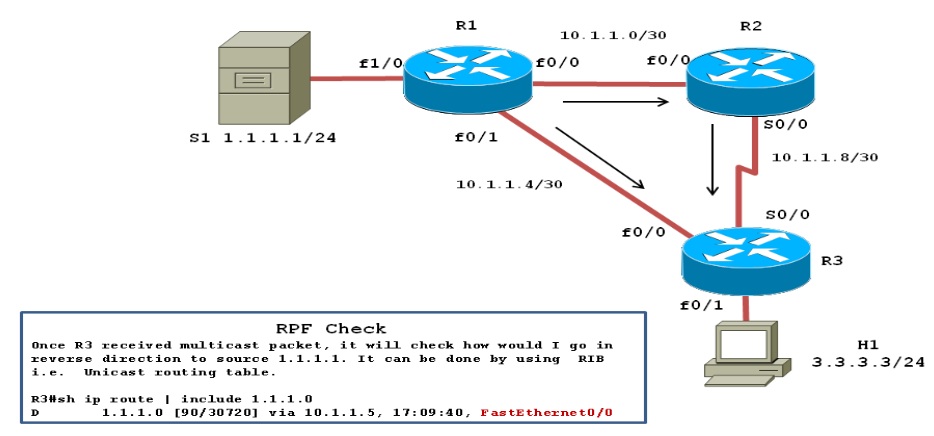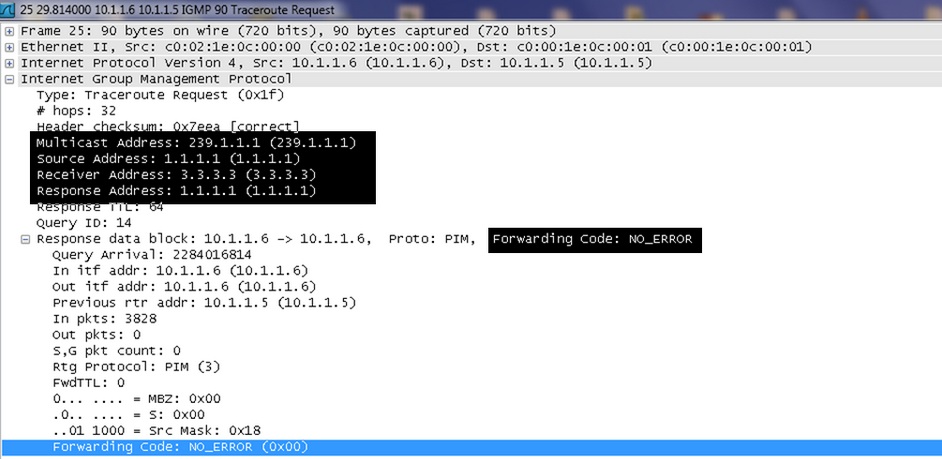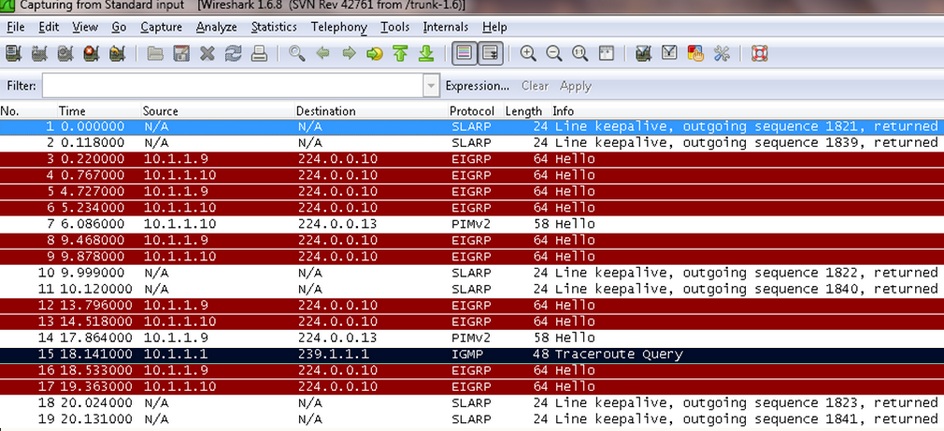BGP Confederations:
With confederations we
partition the whole AS network in sub-AS, without needing to build a full-mesh
topology between all the BGP routers involved in the network. Each
confederation, or sub-autonomous system, will have a full-mesh BGP topology
between the routers forming the confederation. But between confederations, the
behavior will be more like eBGP sessions with some differences (in fact, it’s
called Confederation BGP, cBGP). Each confederation has a different sub-AS
number, usually a private one (from 64512 to 65534).
The topology we will focus on
its as follows:
Two
things are necessary to build a confederation:
- The
private sub-ASNs that will be used in the confederations (64990 and 64991
in our topology)
- The
ASN that the whole confederations system will assume towards true eBGP
sessions (2222 in our topology)
Routers
in confederations can have 3 types of BGP sessions:
- Regular iBGP sessions:
with routers inside the same sub-AS. All these routers having iBGP
sessions must have the same ASN to identify the BGP process (64990 and
64991 in our topology). Furthermore, it’s necessary to build a full-mesh
iBGP topology inside each sub-AS. All the rules for iBGP sessions apply
here.
- cBGP sessions:
the BGP session built between sub-AS is called cBGP (confederation BGP),
and its characteristics are a mix between iBGP and eBGP sessions. The
topology between sub-AS doesn’t need to be full-mesh.
- Regular eBGP sessions:
the whole confederations system behaves as a unique ASN towards eBGP
sessions. All the rules for eBGP sessions apply here.
Every
router inside the confederations system must know the ASN of its sub-AS, the
ASNs peers inside the confederations system, and the ASN that the whole
confederations system will assume towards eBGP sessions.
The
configuration of each router in the example is as follows:
Configuration on R1:
router bgp 1111
network 100.100.100.0 mask 255.255.255.0 route-map LOOPBACK
neighbor 20.20.12.2 remote-as 2222
Configuration on R2:
router bgp 64990
bgp confederation identifier 2222
bgp confederation peers 64991
neighbor 3.3.3.3 remote-as 64990
neighbor 3.3.3.3 update-source Loopback0
neighbor 3.3.3.3 next-hop-self
neighbor 4.4.4.4 remote-as 64990
neighbor 4.4.4.4 update-source Loopback0
neighbor 4.4.4.4 next-hop-self
neighbor 20.20.12.1 remote-as 1111
Configuration on R3:
router bgp 64990
bgp confederation identifier 2222
bgp confederation peers 64991
neighbor 2.2.2.2 remote-as 64990
neighbor 2.2.2.2 update-source Loopback0
neighbor 4.4.4.4 remote-as 64990
neighbor 4.4.4.4 update-source Loopback0
Configuration on R4:
router bgp 64990
bgp confederation identifier 2222
bgp confederation peers 64991
neighbor 2.2.2.2 remote-as 64990
neighbor 2.2.2.2 update-source Loopback0
neighbor 3.3.3.3 remote-as 64990
neighbor 3.3.3.3 update-source Loopback0
neighbor 5.5.5.5 remote-as 64991
neighbor 5.5.5.5 update-source Loopback0
neighbor 5.5.5.5 ebgp-multihop 2
Configuration on R5:
router bgp 64991
bgp confederation identifier 2222
bgp confederation peers 64990
neighbor 4.4.4.4 remote-as 64990
neighbor 4.4.4.4 update-source Loopback0
neighbor 4.4.4.4 ebgp-multihop 2
neighbor 6.6.6.6 remote-as 64991
neighbor 6.6.6.6 update-source Loopback0
Configuration on R6:
router bgp 64991
bgp confederation identifier 2222
bgp confederation peers 64990
network 166.166.166.0 mask 255.255.255.0
neighbor 5.5.5.5 remote-as 64991
neighbor 5.5.5.5 update-source Loopback0
We must pay attention to the
BGP session between R4 and R5. They belong to different confederations, so the
BGP session that they build up is a cBGP. This means some
rules from eBGP apply here. And one of the rules is the bgp-multihop
limit of 1. In order to build a BGP session between routers of
different confederations, we need to use either the interface IP or the command
ebgp-multihop 2.
Now, let’s have a look to the
AS_Path attribute inside the confederations system. Let’s check how the
Loopback 100.100.100.1/24 from R1 is seen by R6:
R6#show ip bgp
BGP table version is 5, local router ID is 6.6.6.6
Status codes: s suppressed, d damped, h history, * valid, > best, i - internal,
r RIB-failure, S Stale
Origin codes: i - IGP, e - EGP, ? - incomplete
Network Next Hop Metric LocPrf Weight Path
*>i100.100.100.0/24 2.2.2.2 0 100 0 (64990) 1111 i
*> 166.166.166.0/24 0.0.0.0 0 32768 i
R6#
R6#show ip bgp 100.100.100.0/24
BGP routing table entry for 100.100.100.0/24, version 5
Paths: (1 available, best #1, table default)
Not advertised to any peer
(64990) 1111
2.2.2.2 (metric 31) from 5.5.5.5 (5.5.5.5)
Origin IGP, metric 0, localpref 100, valid, confed-internal, best
You see that? The new AS_Path
is (64990) 1111. Inside the confederations system, the
AS_Path grows based on the eBGP rule: all the ASN confederations for which the
BGP announcement passes through are added between brackets to the AS_Path attribute.
Well, nice. Let’s see how the
Loopback 166.166.166.66/24 from R6 is seen by R2:
R2#sh ip bgp
BGP table version is 3, local router ID is 2.2.2.2
Status codes: s suppressed, d damped, h history, * valid, > best, i - internal,
r RIB-failure, S Stale
Origin codes: i - IGP, e - EGP, ? - incomplete
Network Next Hop Metric LocPrf Weight Path
*> 100.100.100.0/24 20.20.12.1 0 0 1111 i
*>i166.166.166.0/24 6.6.6.6 0 100 0 (64991) i
R2#
R2#sh ip bgp 166.166.166.0/24
BGP routing table entry for 166.166.166.0/24, version 3
Paths: (1 available, best #1, table default)
Advertised to update-groups:
8
(64991)
6.6.6.6 (metric 31) from 4.4.4.4 (4.4.4.4)
Origin IGP, metric 0, localpref 100, valid, confed-internal, best
And now, by R1:
R1#sh ip bgp
BGP table version is 8, local router ID is 1.1.1.1
Status codes: s suppressed, d damped, h history, * valid, > best, i - internal,
r RIB-failure, S Stale
Origin codes: i - IGP, e - EGP, ? - incomplete
Network Next Hop Metric LocPrf Weight Path
*> 100.100.100.0/24 0.0.0.0 0 32768 i
*> 166.166.166.0/24 20.20.12.2 0 2222 i
R1#
R1#sh ip bgp 166.166.166.0/24
BGP routing table entry for 166.166.166.0/24, version 8
Paths: (1 available, best #1, table default)
Not advertised to any peer
2222
20.20.12.2 from 20.20.12.2 (2.2.2.2)
Origin IGP, localpref 100, valid, external, best
As we can see, towards R1 the
info comes from the ASN 2222. All the confederations system topology are hidden
to R1.




